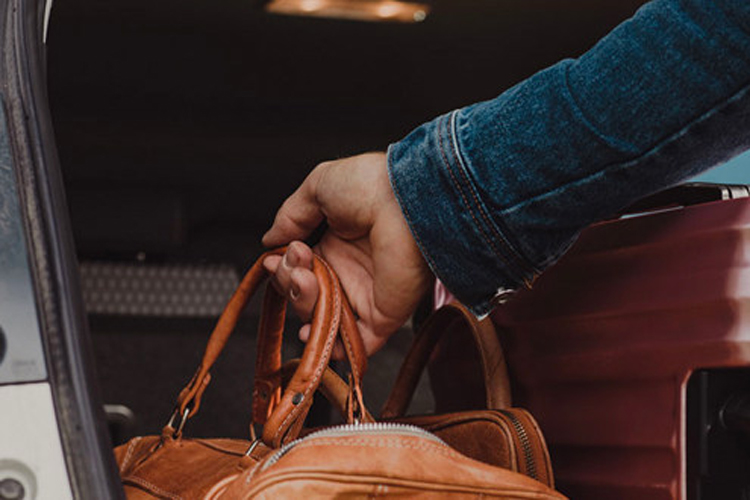Renting a car from an Australian airport is a convenient way to start your trip, giving you the freedom to explore at your own pace. However, navigating the process can sometimes be tricky, especially for first-time visitors. Whether you’re landing in bustling Sydney or opting for car hire at the Launceston Airport, there are some universal tips that will help ensure your experience is seamless and stress-free. Let’s dive into some actionable advice to make your airport car rental process smoother.

1. Book in Advance to Avoid Long Wait Times
One of the best ways to make sure your car hire experience goes off without a hitch is to book ahead. While many airports have rental desks, the last thing you want after a long flight is to spend extra time waiting in line for a vehicle. Pre-booking online not only ensures that the car you want is available, but it also speeds up the pick-up process.
Most major airports, like Sydney, Melbourne, and Brisbane, have several rental companies operating on-site. However, smaller airports, such as Launceston Airport, may have fewer options, so booking in advance is even more crucial. Doing this allows you to secure the best price and reduces the risk of last-minute disappointment. Plus, many companies offer discounts for early bookings, giving you a win-win situation.
2. Choosing the Right Rental Package
Once you’ve settled on the type of vehicle you need, it’s time to consider the rental package. Most rental companies will offer various packages that cater to different needs. Some packages come with unlimited mileage, while others may have mileage limits but a lower base rate.
- Short trips vs long road trips: If you’re planning on doing a lot of driving (like a road trip along the Great Ocean Road or up to Cairns), an unlimited mileage package may be your best bet. However, if you’re only driving from the airport to your accommodation and back, a package with mileage limits could save you money.
- Add-ons: Always check what’s included in the package. For example, do you need GPS navigation, a child seat, or extra insurance coverage? Sometimes rental companies will charge extra for these items, so it’s important to factor them into your budget before finalizing your booking.
3. Understanding Insurance Coverage
Insurance is a vital aspect of hiring a car, but it’s also one of the most confusing. When renting a car in Australia, you will typically be offered several insurance options. Knowing which one to choose can be overwhelming, but understanding the basics will help you avoid any unexpected costs later on.
- Collision Damage Waiver (CDW): This is a common insurance option that limits your liability in case of damage to the rental vehicle. Without this, you may be on the hook for thousands of dollars in case of an accident. However, CDW usually comes with a high excess (the amount you’re liable for before insurance kicks in), so it may be worth considering additional coverage.
- Excess Reduction: To lower your financial risk, many rental companies will offer an excess reduction or full protection package. This reduces the amount you’d have to pay in the event of an accident, but it does increase the daily rental rate.
- Third-Party Insurance: Some travelers prefer to arrange third-party insurance before their trip to avoid high rental company premiums. These can often be more affordable and offer better coverage than what is offered by rental companies.
- Credit Card Insurance: If you’re using a credit card to pay for the rental, check if your card includes rental car insurance as a benefit. Many premium credit cards provide coverage for rental cars, which could save you from purchasing additional insurance.
4. Inspect the Vehicle Before Driving Off
Before you leave the rental lot, it’s essential to thoroughly inspect the car. Even if you’re excited to get your journey started, taking a few minutes to check the vehicle for any existing damage can save you from being unfairly charged later on.
- Check for dents and scratches: Walk around the car and note any visible dents, scratches, or other damages. Ensure that these are documented by the rental company before you drive off.
- Photograph everything: Take photos or videos of the car, paying particular attention to any areas of concern. This can serve as proof of the car’s condition if the rental company tries to charge you for pre-existing damage.
- Inspect the interior: Don’t forget the inside! Check for any stains, tears, or other damage to the upholstery. Also, confirm that all features, such as the air conditioning, GPS, and lights, are working properly.
5. Returning the Vehicle: Timing and Fuel Policy
Returning the car on time and in the same condition you picked it up in is crucial. Many rental companies charge steep fees for late returns, so make sure you’re aware of the time deadline for drop-off. Planning to return the car at least an hour before your flight can provide a buffer in case of unexpected delays.
- Fuel policy: Most car rental companies have a full-to-full fuel policy, meaning you need to return the vehicle with a full tank. Be sure to refuel the car close to the airport to avoid costly refueling charges from the rental company. If possible, locate the nearest petrol station before you pick up the car, so you’re not scrambling to find one when it’s time to return the vehicle.
6. Avoiding Hidden Fees
While the base rental cost might seem reasonable, airport car hire can come with hidden fees that can quickly add up. Knowing what to expect and how to avoid these charges will help you stay within budget.
- Airport Surcharges: Many rental companies charge an additional fee for picking up and dropping off at the airport. While this fee is often unavoidable, being aware of it can help you plan your budget better.
- Young Driver Fees: Drivers under 25 are often subject to additional fees, so if you or someone in your group falls into this category, it’s worth checking these costs in advance.
- Additional Driver Fees: If more than one person will be driving the rental car, you may need to pay an extra fee for each additional driver. Some rental companies waive this fee for spouses or corporate rentals, so be sure to ask.
7. Choosing the Right Vehicle for Your Trip
Finally, consider your travel needs when choosing the vehicle. Whether you need a compact car for city driving or a larger SUV for road trips through the Outback, selecting the right vehicle will make all the difference in your journey.
- Small cars: These are ideal for navigating through cities like Sydney or Melbourne, where parking can be tight. They’re also more fuel-efficient, which is great if you’re planning shorter trips.
- SUVs and 4WDs: For those heading into more rugged terrain or planning road trips in remote parts of Australia, an SUV or 4WD is the best choice. These vehicles are more durable and better suited for unsealed roads or off-road adventures.
- Luxury vehicles: If comfort is a priority, or if you’re renting a car for a special occasion, some airports offer a range of luxury cars. Just be aware that these come with a higher price tag, both for the rental itself and potentially for insurance as well.

Final Thoughts
Renting a car at an Australian airport can be a smooth and hassle-free experience with the right preparation. Whether it’s booking in advance, understanding your insurance options, or knowing what to expect in terms of fees, these tips will help ensure you have a stress-free start to your journey. Whether you’re exploring Tasmania with a car hire at Launceston Airport or taking a road trip through Queensland, being prepared will make your trip all the more enjoyable. Safe travels!




